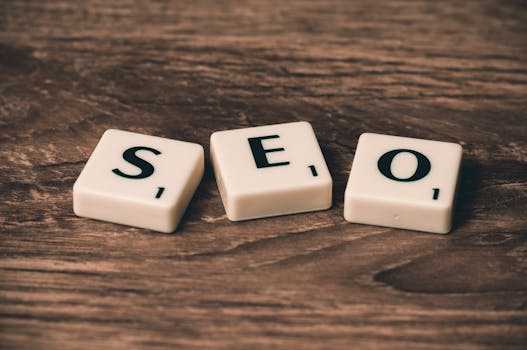On Page Vs Technical SEO
Technical SEO: An Overview
Technical SEO is the backbone of your online presence, ensuring that your website is both search engine-friendly and user-friendly. Without a solid technical foundation, all your content and marketing efforts may go unnoticed. It’s not just about keywords or backlinks; it’s about how your site functions at a fundamental level.
One of the first steps in technical SEO is optimizing your website’s structure. This means ensuring that your site is easily crawlable by search engines. A clean URL structure, proper internal linking, and XML sitemaps play crucial roles in this process. If search engines struggle to access your content, it doesn’t matter how great your posts are.
Site speed is another critical factor. If your website takes too long to load, you’ll likely lose visitors before they even engage with your content. Fast-loading sites enhance user experience and are favored by search engines like Google. Implementing techniques such as image optimization and leveraging browser caching can significantly improve load times.
Mobile optimization is no longer optional. With a large portion of internet traffic coming from mobile devices, responsive design is essential for technical SEO. Not only does this help with user experience, but search engines also prioritize mobile-friendly sites in their rankings.
Security is another critical component. Having an SSL certificate ensures your site is secure and builds trust with your users. Google favors secure sites, so make sure yours is HTTPS to boost its credibility.
Lastly, keep an eye on structured data. Utilizing schema markup can help search engines understand your content better. This can lead to enhanced search results with rich snippets, which ultimately improve your click-through rates. Implementing structured data can give you a competitive edge in the crowded online market.
Technical SEO might seem daunting, but taking the time to optimize your site can yield remarkable returns. Focus on these areas consistently, and you will notice an improvement in both your rankings and user experience.
Importance of keyword optimization
Keyword optimization is a crucial element of SEO that can dictate the success of your online presence.
- Keywords drive targeted traffic. Without the right keywords, your content may go unnoticed by those who need it most.
- Effective keywords improve content relevance. Optimizing for specific phrases ensures that your articles resonate with your audience’s queries, increasing the likelihood of engagement.
- Keywords enhance user experience. By aligning your content with what users are searching for, you make it easier for them to find answers and solutions, fostering trust and loyalty.
- Optimized keywords boost search engine ranking. The right keywords can significantly elevate your site’s visibility on search results, leading to increased organic traffic.
- Keyword research uncovers market opportunities. It reveals gaps in the market where you can position your content to attract a more significant audience.
- Long-tail keywords can yield higher conversion rates. These specific phrases often indicate a stronger intent to purchase or engage, making them valuable for targeted campaigns.
How On-Page SEO Affects User Experience
On-page SEO is a critical element that directly influences user experience on your website. Strong content and relevant keywords are essential, but the way this content is presented plays a vital role in keeping visitors engaged. A well-structured page boosts readability, which significantly affects how users interact with your site. If paragraphs are too long or information is too dense, visitors may leave before they even fully comprehend your message.
Moreover, the use of headers and bullet points allows users to scan the page quickly. This simple practice ensures that users can find essential information swiftly, reducing frustration and increasing the likelihood of them staying on your site longer. This can lead to higher engagement and conversion rates, which are critical for any online strategy.
Page load speed is another crucial on-page SEO factor. If your site takes too long to load, users will bounce—no ifs, ands, or buts about it. Search engines favor fast-loading sites, and users do too. Therefore, optimizing images and leveraging browser caching are effective strategies to enhance user satisfaction.
If a website is mobile-friendly, that adds another layer to the user experience. Many users now access the web primarily through their phones, making responsive design a significant factor in keeping them on your site. Ensuring that layouts adapt smoothly to different screen sizes is not an option anymore; it’s a necessity.
Lastly, good on-page SEO practices, such as meta tags and alt text for images, not only improve search rankings but also enhance accessibility for users with disabilities. This inclusivity broadens your audience and reflects a commitment to quality user experience. Ultimately, enhancing on-page SEO aligns closely with providing a superior user experience, cultivating loyalty, and driving long-term success.
Content quality and relevance
Essential elements for powerful SEO.
- Quality content engages readers. It’s not enough to just fill your blog with words; the information presented must grab attention and hold it.
- Relevance is crucial. Search engines prioritize content that answers users’ questions accurately and directly. Write what your audience wants to know, not just what you think they should know.
- Use clear language. Avoid jargon and overly complex sentences. The simpler your writing, the more effectively you communicate your ideas.
- Consistency matters. Regularly posting high-quality content keeps your audience engaged and signals to search engines that your site is active and relevant.
- Stay updated on trends. Search algorithms change frequently. Keeping your content fresh and relevant both to your audience and current trends can significantly improve your rankings.
- Include visuals. Images, videos, and infographics can break up text-heavy posts while enhancing understanding and engagement.
- User experience should never be overlooked. Well-structured, easy-to-navigate content encourages readers to stick around and engage with multiple posts.
- Optimize for search intent. Know what your audience is searching for and adjust your content accordingly. Aligning your posts with user intent increases the likelihood of earning higher rankings.
Common Mistakes in On-Page SEO
One of the prevalent mistakes I see in on-page SEO is neglecting title tags. This is a critical element; your title tag is often the first thing users notice in search results. Not crafting unique and keyword-optimized title tags means missing out on potential clicks. Another error is overlooking header tags. Properly structured header tags (H1, H2, H3) not only aid in readability but also signal the content hierarchy to search engines. Without them, your content can lack focus, making it harder for both users and search engines to understand the flow. Skipping meta descriptions is yet another common pitfall. A compelling meta description invites users to click through to your site; without it, even great content can remain invisible in search results.
Keyword stuffing is a mistake I simply can’t overlook. It’s tempting to load pages with keywords to rank better, but search engines prioritize natural language and user experience. Not only does keyword stuffing harm readability, but it also risks penalties from search engines. Ignoring internal linking can be detrimental. Internal links help establish a hierarchy of information on your site, guiding visitors and search engines alike. If you’re not using them effectively, you’re limiting both user engagement and SEO value.
Lastly, many forget about mobile optimization. With the majority of web traffic coming from mobile devices, failing to ensure your site is mobile-friendly can severely impact your ranking and user experience. Ensure that every on-page element is responsive and performs well across all devices.
Jan 11, 2022 … 10+ Years Web & Digital Expertise | Focused On… · Keywords Are Significant Only for On-Page SEO. On-page SEO is all about keyword selection, as …
Sep 12, 2020 …SEO specialists are marketing professionals who use research and analysis to improve a website's ranking on search engines like Google. They …
What’s the difference between TECH SEO Specialist, SEO Specialist …
Understanding On-Page SEO
On-page SEO is the foundation of any successful SEO strategy. It refers to the optimization of individual web pages to rank higher and earn more relevant traffic in search engines. This includes everything from content and HTML source code to images, heading tags, and even the overall website structure.
Content is king, and this rule reigns supreme in on-page SEO. Quality content tailored to your audience’s needs significantly affects your rankings. Using relevant keywords strategically throughout your text is essential, but seamless integration is crucial; keyword stuffing is detrimental. You want your content to flow naturally while addressing your visitors’ intent.
Heading tags (H1, H2, H3) play a significant role in how search engines index your content. The H1 tag should encapsulate the main topic of your page, while subsequent heading tags help organize content into digestible pieces. This not only improves readability but also assists in guiding search engine crawlers through your content.
Internal linking is another vital aspect of on-page SEO. By linking to other valuable content on your site, you enhance user experience and help search engines understand the structure of your website. This creates a web of interconnected information that lowers your bounce rate and encourages users to explore more.
Don’t overlook image optimization. Images enhance engagement, but they must be optimized to prevent slow page load times, which can affect your rankings. Use descriptive filenames and alt text to provide context for search engines and improve accessibility.
Lastly, page speed and mobile-friendliness should be at the forefront of your on-page SEO strategy. Users expect fast-loading pages, and search engines prioritize sites that can deliver a smooth experience, especially on mobile devices. Utilize tools to regularly test and optimize your site’s performance.
In mastering on-page SEO, you set the stage for all other SEO efforts. Each element works synergistically to boost your site’s authority and visibility. By consistently applying these techniques and staying updated with best practices, you’re not only enhancing your SEO but creating a better experience for your users.
The Balance Between On-Page and Technical SEO
Achieving a balance between on-page and technical SEO strategies is essential for any website aiming to rank better in search engines. Many people focus too much on one aspect or the other, assuming that either their content will shine through or that technical elements will do the heavy lifting. However, that’s a misguided perception. On-page SEO, with its emphasis on keywords, content quality, and user experience, cannot thrive without the supportive framework of technical SEO. Technical SEO ensures that search engines can crawl and index your site effectively, optimizing its foundational elements such as site speed, mobile-responsiveness, and secure connections.
On-page SEO, meanwhile, enhances user engagement through relevant and valuable content, effective use of headings, and strategic internal linking. Both aspects are interdependent; you can’t achieve significant results by neglecting one for the other. If your website is technically sound but lacks relevant content, you will miss out on traction. Conversely, if you have stellar content but poor technical elements, users may struggle to access or interact with it.
Many website owners underestimate the power of combining these strategies. From experience, I can assert that aligning technical and on-page SEO can transform how your site performs on search engines. Rather than treating them as separate entities, embrace their connection. Regular audits can help identify gaps where improvements could be made in either area, ultimately supporting your website’s overall goal of gaining higher visibility.
Emphasis should be placed on optimizing technical aspects continually, while also honing your on-page efforts to engage and convert users. Neglecting either side can lead to missed opportunities for growth and visibility. When both SEO strategies work in tandem, your website can not only attract visitors but also provide them with a stellar experience that leads to conversions.
Differences Between On-Page and Technical SEO
On-page SEO and technical SEO are two fundamental components of search engine optimization, each serving its unique purpose. On-page SEO focuses on optimizing individual pages to improve ranking in search engines. This includes elements like keyword placement, content quality, meta tags, and internal linking. Every time I enhance on-page factors, I notice a direct positive impact on traffic and engagement. Technical SEO, on the other hand, refers to the backend aspects of a website that influence its visibility and performance. This encompasses site speed, mobile-friendliness, XML sitemaps, and structured data. These elements are crucial because they affect how search engines crawl, index, and render your website. I’ve often seen how a neglected technical aspect can hinder even well-optimized content from reaching its audience.
To illustrate further, consider a beautifully crafted blog post with impeccable writing and keyword integration—this is on-page SEO at work. However, if the website’s loading time lags or its mobile compatibility is poor, users may abandon it before engaging. Technical SEO provides the foundation that allows on-page efforts to shine.
In my experience, neglecting either aspect can lead to missed opportunities. A balance is essential; while I focus on creating compelling content, I also ensure that the technical foundation supports the engagement efforts. If you’re serious about boosting your website’s ranking and driving organic traffic, grasping the differences between on-page and technical SEO is crucial. Understanding these differences allows for a more comprehensive and effective SEO strategy.
Mar 7, 2024 …Technical SEO involves the optimization of a website's infrastructure, ensuring that search engines can crawl and index the site efficiently. On …
Technical SEO vs. On-Page SEO: The Basics | Buying Journey …
While technical SEO focuses on the backend of your website, on-page SEO centers on the content that you post. You can use its guiding principles to put together …
Aug 13, 2023 … Unlike on-page SEO, which focuses on content and user experience, Technical SEO deals with the website's underlying infrastructure. Google's …
Jun 21, 2022 …Technical SEO involves making sure that your website's code is clean and effective, while on-page SEO has to do with the way that your website …
Jan 20, 2021 … A site that is built from the ground up for SEO will ensure that search engines can crawl and index pages with ease. A site that publishes …
While technical SEO focuses on the backend architecture and elements that affect site speed and crawlability, on-page SEO centers around content …
Tools for Analyzing On-Page SEO
I’ve found that using the right tools can radically change how we analyze on-page SEO. These resources aren’t just handy; they can profoundly enhance our optimization efforts. **The right tools reveal insights that even the most seasoned SEO veterans might overlook.**
One of my favorite tools is **Screaming Frog SEO Spider**. It’s a game changer for crawling websites and identifying issues like broken links, duplicate content, and missing metadata. **This tool’s ability to analyze hundreds of pages in seconds makes it indispensable for anyone serious about on-page SEO.**
Another must-have is **Google Search Console**. This free tool offers unrivaled insights into how your site performs in Google searches. **Understanding search impressions, click-through rates, and indexed pages directly from Google is invaluable.**
**Ahrefs** and **SEMrush** are also worth mentioning. Both provide comprehensive analysis tools that help assess keyword rankings and backlinks, but they excel in on-page keyword optimization insights. **The way they dissect competitor strategies can unleash new ideas and avenues for improvement.**
Lastly, don’t underestimate the power of **Yoast SEO** if you’re using WordPress. This plugin not only aids in optimizing individual posts but also provides real-time feedback on SEO practices, readability, and keyword density. **Yoast truly simplifies the technical aspects of SEO without sacrificing depth and effectiveness.**
Using these tools thoughtfully can supercharge your on-page SEO strategy. **They can help you identify key areas for improvement and ultimately drive more targeted traffic to your site.**
The Future of On-Page and Technical SEO
On-page and technical SEO are evolving rapidly, and understanding these changes is crucial for anyone serious about boosting their website’s visibility. As search engines become more sophisticated, our strategies must adapt correspondingly. For instance, the integration of artificial intelligence is transforming how we approach keyword research and content creation. Semantic search is now more prominent than ever, meaning the context surrounding keywords matters significantly. This shift underscores the need for high-quality, relevant content that answers user queries in a comprehensive way.
Imagining a future where user experience dictates ranking, Google has already begun prioritizing sites that provide seamless navigation and fast loading times. If your website isn’t optimized for mobile and doesn’t load quickly, you’ll likely see your rankings drop. We can no longer afford to treat technical elements as secondary. They are fundamental to our success.
Moreover, the rise of structured data and rich snippets is changing the game. Utilizing schema markup effectively can enhance how our sites appear in search results, making them more attractive to users. This is not simply an option; it’s becoming essential.
Voice search is another area worthy of attention. With more people using voice-activated devices, we must rethink our SEO strategies to include natural language processing. FAQs, featured snippets, and conversational content will gain importance as we adapt to this new search behavior.
In a world where updates appear regularly, agility is key. SEO is no longer a one-and-done task; it’s an ongoing commitment to keep pace with industry trends and technological advancements. Embracing change and staying educated is the only way forward for those of us aiming to excel in SEO in the coming years.
Benefits of Effective On-Page SEO
Effective on-page SEO is essential for achieving higher search engine rankings and driving organic traffic. Here are some key benefits that illustrate its significance.
- Increased Visibility: Achieving high visibility in search engine results pages means more potential visitors to your site. Well-optimized content can make all the difference.
- Improved User Experience: A focus on on-page SEO often leads to better site usability. Clear navigation, fast-loading pages, and quality content keep visitors engaged.
- Higher Conversion Rates: Effective optimization not only attracts traffic but also increases the likelihood of converting visitors into customers. Targeting the right keywords can help reach your ideal audience.
- Enhanced Relevancy: By optimizing each page around specific topics, you effectively communicate your site’s purpose to both users and search engines. This relevancy is crucial for ranking well.
- Boosted Credibility and Authority: Quality content combined with proper optimization enhances your site’s credibility. As users find valuable information, they’re more likely to return and recommend your site.
Key Elements of On-Page SEO
On-page SEO refers to the strategies and techniques used directly on your website to improve its search engine rankings. It’s the foundation upon which your online presence is built. Understanding this is crucial for anyone serious about optimizing their site.
The first key element is the **title tag**. This is not just a label; rather, it’s a summary of your content. It should be eye-catching and contain relevant keywords to grab the attention of both users and search engines. A well-crafted title tag can significantly impact your click-through rates.
Another significant factor is the **meta description**. Although it doesn’t directly influence rankings, it plays a pivotal role in attracting clicks. A compelling meta description that summarizes your content and includes targeted keywords can make all the difference.
Next, we have **header tags** (H1, H2, H3, etc.). These tags help structure your content, allowing both readers and search engines to understand the hierarchy and main points of your article. The H1 tag should contain your primary keyword and clearly define the topic.
**Keyword optimization** is essential throughout your content. Use your primary keyword naturally in the first paragraph, and sprinkle related keywords seamlessly throughout the text. Avoid keyword stuffing, which can be detrimental.
We can’t forget about **image optimization**. Use descriptive file names and alt text for images to improve your SEO while also enhancing accessibility.
Lastly, the **internal linking** strategy is fundamental. Linking to relevant pages within your website can enhance user experience while spreading link equity, helping search engines index your site more effectively.
Together, these elements create a strong foundation for your on-page SEO efforts. Mastering them will ultimately aid in increasing organic traffic and enhance your website’s visibility.
Technical SEO Tools You Should Know
If you’re serious about SEO, technical tools are essential for optimizing your website’s backend. These tools help you identify issues that can hinder your performance in search engine rankings. You need to be proactive with tools that can provide insights into site speed, mobile-friendliness, and overall technical health.
One of my favorites is Google Search Console. This tool provides crucial data about how Google views your site. You can monitor crawl errors, identify issues with mobile usability, and understand your site’s search traffic more clearly. Without this tool, you’re operating in the dark.
Screaming Frog SEO Spider is another tool you must consider. This desktop program crawls your website, allowing you to analyze URLs for key metrics such as broken links, metadata, and more. It’s vital for conducting thorough audits. The interface might seem a bit technical at first, but the insights are irreplaceable.
Then, there’s Ahrefs. It’s primarily known for its backlink analysis, but it also offers tools for site audits. This can help spot issues like slow loading times, duplicate content, and even security vulnerabilities. If you’re serious about ranking higher, you’ll want this in your toolkit.
Another favorite of mine is GTmetrix. This tool focuses on site speed optimization, providing detailed reports on your page load times and suggestions for improvement. According to numerous studies, site speed is a ranking factor, so neglecting it could cost you valuable traffic.
Finally, consider exploring Schema Pro, which helps you implement structured data on your site. This can greatly enhance your visibility in search results by providing additional context about your content. Having that edge in the SERPs can make a noticeable difference.
By utilizing these technical SEO tools, you’re not just maximizing your site’s potential; you’re also ensuring that you’re on a competitive edge in the search engine rankings. Remember, in SEO, every little detail matters!
Addressing Technical SEO Issues
Technical SEO is crucial for ensuring that search engines can efficiently crawl and index your site. Without it, all your creative content will go unnoticed. First, you must conduct a thorough audit of your website. Utilize tools like Screaming Frog or SEMrush to identify issues such as broken links, duplicate content, and missing meta tags. These problems can severely impact your site’s visibility. Fixing these issues is imperative for making your site SEO-friendly.
Site speed is another essential technical facet. A slow website frustrates users and leads to higher bounce rates, affecting your rankings. Use Google PageSpeed Insights to analyze and enhance your website’s loading time. Consider optimizing images, leveraging browser caching, and reducing server response times.
Mobile optimization cannot be overlooked. With mobile traffic dominating, a responsive design is non-negotiable. Ensure your site is mobile-friendly or face the consequences of losing a significant audience. Google’s Mobile-Friendly Test can provide insights into issues that need correcting.
Another common issue lies with structured data. Search engines appreciate structured markup because it helps them understand your page content better. Implement schema markup to enhance your visibility in search results. This can help you earn rich snippets, which can significantly increase click-through rates.
Finally, ensure that your XML sitemap is up-to-date and submitted to Google Search Console. It’s your website’s roadmap for search engines, so keeping it organized is vital for indexing your pages. Addressing these technical SEO issues is not an option; it’s a necessity for maintaining and improving your online presence.
The Role of Technical SEO in Site Performance
Technical SEO is the backbone of effective site performance. It encompasses all the strategies and practices that optimize a website for crawling, indexing, and rendering by search engines. A well-implemented technical SEO framework ensures that your website is accessible, fast, and easy to navigate. Without this foundation, any content strategy or backlink effort can fall short.
One of the first aspects to consider is site speed. A slow website can kill your rankings and drive users away. If your pages take too long to load, visitors will bounce, and search engines take that as a negative signal. Optimizing images, leveraging browser caching, and minimizing code can significantly enhance loading times.
Mobile optimization also plays a crucial role. With the majority of web traffic coming from mobile devices, having a responsive design is essential. This means your website should not only look good but also function seamlessly on all screen sizes. Google’s mobile-first indexing prioritizes mobile versions of websites, making this an absolute must.
Additionally, structured data markup enhances how your site appears in search results. By implementing schema markup, you can improve your snippets, making them more attractive to potential visitors. This directly affects click-through rates and can lead to increased traffic.
Finally, the importance of a clean URL structure cannot be understated. URLs should be descriptive, concise, and easy to read. This helps both users and search engines understand the content of your pages more easily, boosting your chances of achieving higher rankings.
In essence, neglecting technical SEO is a surefire way to sabotage your site’s performance. By prioritizing these aspects, you set the stage for a successful online presence that can thrive in search engines.
What is the difference between On-Page and Technical SEO?
On-Page SEO is all about optimizing elements within your website. This includes content, meta tags, headers, and images. Every word matters here, and each aspect is vital for communicating to search engines what your page is about. It’s an opportunity to showcase your brand’s voice and engage users effectively.
Technical SEO, on the other hand, focuses on the behind-the-scenes elements. It encompasses site speed, mobile-friendliness, indexing, crawlability, and the overall structure of your website. If On-Page SEO is the song, then Technical SEO is the instrument tuning and setup—essential for a flawless performance.
Both components are critical, but they serve different purposes. On-Page helps to improve user engagement and content relevance, while Technical ensures search engines can access and interpret your site efficiently. Mastering both will significantly enhance your SEO strategy.
How can I improve my On-Page SEO?
On-Page SEO is crucial for boosting your rankings. Start with optimizing your title tags and meta descriptions; these are your first impressions. Ensure they are compelling and contain relevant keywords. Content is king. Create high-quality, valuable content that answers your audience’s questions. Use headings (H1, H2, etc.) for proper structure and to emphasize important points. Keyword placement matters. Naturally incorporate keywords throughout your content, but avoid keyword stuffing. Pay attention to alt text for images since it enhances accessibility and helps search engines understand your visuals. Optimize URL structures. Keep them short, descriptive, and include keywords. Loading speed is another critical factor; use tools like Google PageSpeed Insights to analyze and improve your site’s performance. Lastly, ensure your website is mobile-friendly; a responsive design keeps users engaged. Master these strategies, and you will see tangible improvements in your SEO efforts.
What technical SEO issues should I look for?
Technical SEO is crucial for optimizing your website’s visibility. First, check your site’s speed. A slow-loading page can severely impact your rankings and user experience. Next, focus on mobile responsiveness; Google prioritizes mobile-friendly sites. If your site isn’t adaptable to various devices, you’re at a disadvantage.
Another issue to inspect is your site structure. Ensure a clear hierarchy and logical navigation; this helps search engines crawl your pages more efficiently. Broken links are another red flag—check for 404 errors and fix them, as they harm your site’s credibility. Additionally, verify your XML sitemap; it should be up-to-date and properly submitted to search engines.
Lastly, don’t neglect HTTPS security. Sites without this can lose rankings and visitor trust. Regularly monitor your site for these issues to maintain optimal SEO performance.
Why is user experience important for SEO?
User experience (UX) directly affects SEO, and I can’t stress this enough. Search engines like Google prioritize websites that offer an engaging and satisfying experience for visitors. If a user arrives at your site and quickly leaves because it’s difficult to navigate or slow to load, search engines take note of that behavior.
High bounce rates and low time spent on page are clear indicators of poor UX. These metrics signal to search engines that your content isn’t relevant or engaging, leading to lower rankings. On the flip side, a user-friendly website keeps visitors interested, encouraging them to explore more and engage with your content. This behavior sends positive signals to search engines, enhancing your SEO performance.
Moreover, a well-designed site can improve conversion rates and overall customer satisfaction. If users find what they need easily and have a pleasant experience, they are more likely to return and share your content. This not only increases organic traffic but can also lead to higher backlinks, which are crucial for SEO.
In essence, investing in user experience isn’t just about aesthetics; it’s a critical factor that influences your website’s visibility and success in search results.
Which tools are best for On-Page SEO analysis?
When it comes to On-Page SEO analysis, a few tools stand out as essential. My top picks are SEMrush, Ahrefs, and Moz. Each of these platforms provides unique insights that can significantly enhance your optimization efforts.
SEMrush offers a comprehensive site audit tool that pinpoints issues ranging from broken links to meta tag optimization. This tool is incredibly user-friendly and perfect for those who want immediate feedback. Ahrefs excels at analyzing your keywords and understanding your competitors’ strategies. By assessing backlink profiles, you can make more informed adjustments to your content.
Moz, on the other hand, shines with its Page Optimization feature which gives tailored recommendations based on your specific keywords. It’s great for both beginners and seasoned pros. Lastly, Google Search Console is essential for monitoring your website’s performance in organic search results and identifying indexing issues.
Combining these tools allows you to cover all bases of On-Page SEO analysis. Remember, the key is to continually analyze and optimize your site. Don’t just set and forget; SEO is an ongoing process.
How often should I audit my website for SEO?
Auditing your website for SEO should be a regular practice, ideally every 3 to 6 months. This frequency allows you to stay ahead of search engine algorithm updates and competitive movements in your niche. A comprehensive audit is crucial for identifying issues that could hinder your site’s performance. Think of it as a health check for your website—addressing broken links, optimizing images, and improving site speed can significantly enhance user experience and ranking. If you’re running a large site or making frequent changes, you might even consider monthly audits. Regular audits help you track changes in keyword performance and adapt your strategies accordingly. SEO isn’t a set-and-forget game; it’s a constant evolution. Therefore, it’s essential to make audits a key part of your digital marketing strategy. By keeping your site optimized, you’ll ensure you remain competitive and relevant.
On-Page SEO centers on perfecting individual web pages. I believe that every element—content, structure, and keywords—plays a crucial role in search visibility. Mastering these aspects is essential for anyone serious about increasing website traffic.
Technical SEO is essential for optimizing backend elements. It directly impacts your website’s performance and speed, which are crucial for user experience and search rankings. Take it seriously; your site’s success depends on it.
Both On-Page and Technical SEO are essential for ranking well on search engines. I’ve seen firsthand how neglecting either can hinder visibility and traffic. Mastering both aspects will significantly enhance your online presence.
Regular audits are essential for pinpointing On-Page and technical SEO issues. Without them, your website’s performance may suffer unnoticed. I believe these audits are vital for staying ahead of competitors and driving organic traffic.
Being on top of SEO trends is non-negotiable for success. The digital landscape shifts rapidly, and ignoring these changes means jeopardizing your site’s visibility. I prioritize ongoing learning and adaptation to maintain a competitive edge.
**Combining various SEO strategies creates a powerful force for ranking improvement.** By embracing both on-page and off-page techniques, I see significant boosts in organic traffic and visibility. **This integrated approach is essential for lasting success.**
Choosing the right SEO tools drastically reduces the complexity of optimization. I’ve seen firsthand how effective tools can boost efficiency, enabling me to focus on crafting quality content instead of getting stuck in tedious tasks.
User experience is significantly influenced by On-Page SEO factors. I’ve seen firsthand how well-optimized pages not only improve rankings but also enhance user interaction. Better content, clear navigation, and quick load times create engaging experiences, driving both traffic and conversions.

Albert Mora is an internationally renowned expert in SEO and online marketing, whose visionary leadership has been instrumental in positioning Seolution as a leader in the industry.










